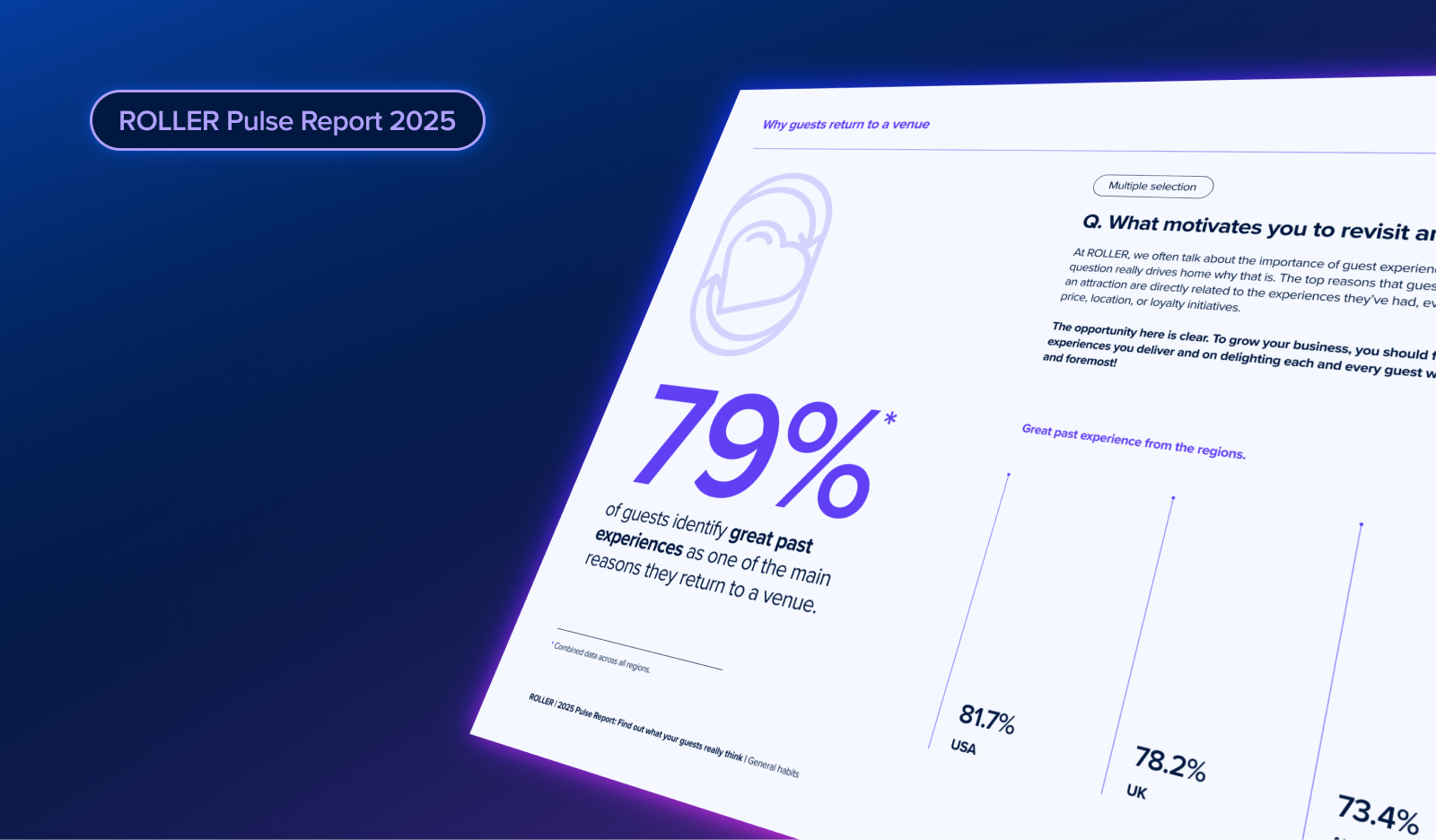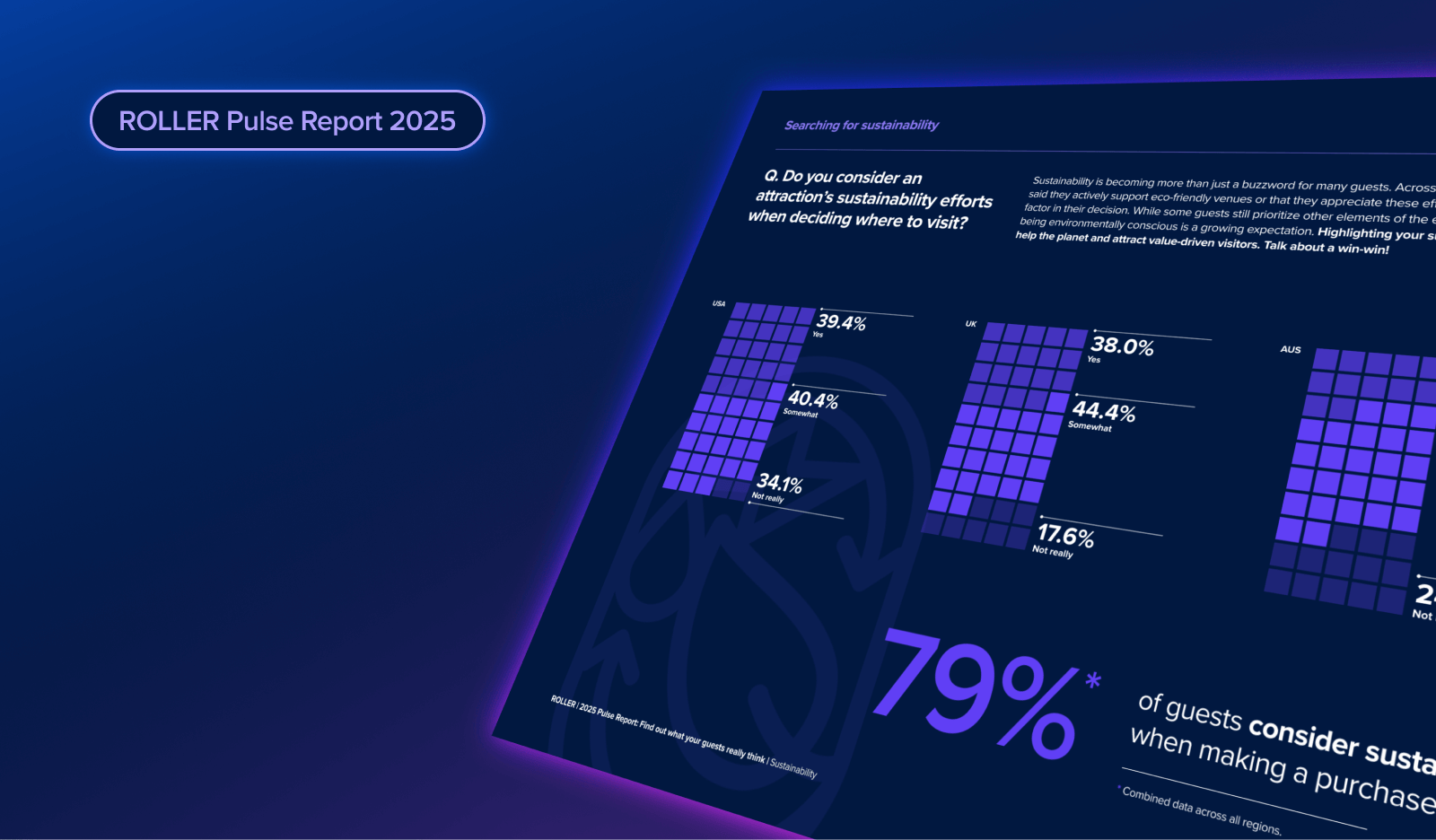Are You Getting Better all the Time?

If I were to ask, “What type of experience are you trying to create for your guests?” you’d probably give me an answer like “a safe, clean, enjoyable experience that creates long-lasting memories.” Am I right? I’m probably close. Maybe there’s more to add onto it, but I’m guessing nothing less, especially if you’ve correctly defined your guests’ expectations, and how they’ve changed. So how do you accomplish that? Did you set out on day one with an overflowing metaphorical box of experiences, or are you constantly challenging yourself to get inspired, stay inspired, and keep finding new ways?
(I hope it’s the latter. If it’s the former and you’ve come across every possible way to produce lasting memories, no need to read on.)
One of the greatest things about guest experience is that there is no finish line. There is no limit to the service you can provide and the experience you can deliver. There will always be new and innovative ways to deliver “WOW” moments, go above and beyond, and create experiences that result in lasting memories. This isn’t all fluff, either. Your revenue potential is also limitless, which means that your highest grossing day isn’t just the new benchmark for how much you can accomplish, it sets the stage for what can beat it.
To avoid stagnation, you must focus on continually improving your guest experience. Here are some of the top ways you can do that.
Listen to your guests. Your paying guests should be the primary source of information related to how your business can get better. A single guest may not provide all the answers you need, but by looking at aggregate feedback data from surveys, reviews, and direct feedback can offer clear indicators for which areas of your business are firing on all cylinders, and which areas need the most attention. When you identify the areas of your business that are generating the most concerns, use a guest experience solution to solve the problem rather than attempt to eliminate the problem altogether. For instance, if one of your top complaints is long lines, one way to look at it would be strive to make lines shorter. But will that eliminate the complaint? Probably not, because the definition of a long line will be different from one guest to another. So in addition to trying to find and eliminate small inefficiencies, why not make the wait time more enjoyable? Look at the environment that they’re waiting in, see how often staff members are interacting with guests, or keep your team moving so your guests can see the hustle. Or, just put a mirror or two on the wall so your guests can occupy themselves with… themselves.
Leverage technology to gain data. We have more information now than we ever have before, and the power of data keeps getting stronger. New technological breakthroughs are making the decision-making process so much easier by bringing clearer answers to the forefront. For instance – do you have a game in your arcade that is performing higher than you expected? Move it to a more centralized position on your game floor and raise the price… even if only slightly. The data suggested that the game is in high demand, and now you can take the opportunity to optimize that benefit. If sales continue rising, buy a duplicate and position it in another high-traffic area. Now you have two “anchor” games or attractions that are improving the guest experience, along with your bottom line.
Be your biggest competitor. What happens when you get to the top? Do you stop and take a break or do you create another peak? High performing businesses don’t look at only their competitors as the benchmark, they look internally at their own operations, and keep raising the bar. Seeing what those around you are doing helps understand how you fit in with the market, but creating new goals within your own organization keeps you focused on what matters most.
Look outside the industry. In addition to being your own biggest competitor, consider what your guests are comparing you to. Sure, they’re probably thinking of similar types of experiences, but it’s also safe to say that nearly every industry these days is competing with Amazon, Netflix, Ritz Carlton, and Uber. Take a page from what the leading companies in various industries are doing, because your guests are expecting that too. Do you sell tickets online? Your guests expect it’ll be as easy as Amazon. Do you prioritize friendly service? Your guests are comparing you to the greatest service they’ve ever gotten, like a stay at a Ritz Carlton. Do you have a mobile app that allows guests to reserve time slots, order food, or contact you? They expect as seamless of an experience that they get from Uber. Even if you’re the best in your industry, are you the best in all industries?
Regularly ideate new “WOW” moments. The best tool you have in your guest experience toolbelt is the art of the “WOW” moment. When you structure your “WOW” moments effectively and follow the formula to create them, add them into your arsenal and implement them into your operation, and then keep going. Bring your staff into the conversation and let the creative juices fly. Your frontline team knows the guest experience the best, so encourage idea sharing across the organization, and don’t be afraid to take small risks if the reward is worth it – your guests will thank you, and so will the team members that contributed the suggestion. Your ideation process should boost guest engagement and employee engagement.
As you begin to work through each of these, never lose sight that you must also maintain the baseline experience that you’ve promised. If you only do the above actions with an ambition to plow into the future, you risk leaving behind what you’ve put in place and what may already be a proven formula. Your core product makes up the expectations that you’ve set for your guests, and your guests see these as promises that you’ve made for them. You must balance your innovation with a continued focus on your existing infrastructure.
Related articles

.png)
What the 2025 Pulse Report Reveals About Guest Booking Behavior at Attractions

2025 Pulse Report: How Sustainability Is Shaping Guest Expectations
Enhance your guest experience
Get free education, tips and inspiration to help you run a successful venue.